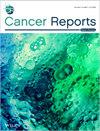Basocellular carcinoma (BCC) is the most prevalent skin malignancy, often localizing to the UV-exposed skin of the face. While most BCC is relatively indolent, aggressive subtypes, including infiltrative BCC, pose the treatment challenges of ensuring functional and aesthetic preservation with a high risk of recurrence.
A 78-year-old female patient complained of recurrent left chin BCC of infiltrative subtype, which was first treated in 2013 by wide local excision and adjuvant radiotherapy. Recurrent carcinoma was reported in 2017, 2021, and most recently in 2023. The most recent recurrence presented with scar contracture, facial asymmetry, and drooping of the lip. Surgical resection involved extensive excision of the lower lip and chin, exposing the mandible. Reconstruction was achieved with the help of bilaterally designed Karapandzic flaps for the lip and a bilobed rotational flap for the chin defect. Although no chemotherapy and immunotherapy were given, the functional and aesthetic result were satisfactory. The procedure was executed while preserving the pertinent neurovascular structures, maintaining oral competence, and restoring the lower face. The Karapandzic flap was helpful in maintaining the lip function, whereas the chin was reconstructed using the bilobed rotational flap. Post-operative histology confirmed the diagnosis of BCC with squamous differentiation, which had clear margins. The patient did well and the cosmetic and functional outcome was satisfactory without any disease at 18 months after surgery.
This case sheds light on the difficulties encountered in treating recurrent facial BCC in developing countries. In the absence of systemic therapies, advanced surgical techniques and intensive follow-up resulted in a long disease-free period with good functional and aesthetic outcomes, thanks to the successful use of innovative reconstruction even in a low-resource setting.



